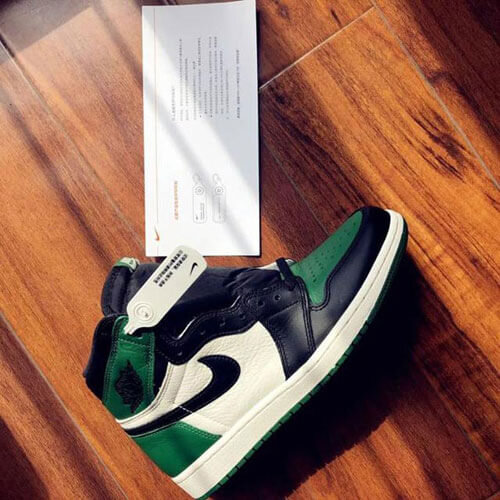![]()
Nike’s anti-theft buckle is different from all previous sneaker anti-theft buckles. This time, Nike’s anti-theft buckle contains RFID tags and uses RFID technology. Source and pic via: https://www.nfctagfactory.com/news/Nike-will-introduce-RFID-as-a-new-means-of-after-sales-counterfeit-detection.html
If you haven’t picked up a copy of my book I have signed copies available on the site. You can use the link below:
Nike’s Consumer Direct Offense, Amazon & StockX: The Disruption of Sneaker Retail
That was a shameless plug for my book, but the reason I’m bringing it up is because I wrote a chapter on the value of StockX, not as an authentication service and a middleman, but for their software. In the book I explained that investment into consignment businesses, while extremely attractive on the surface have underlying issues that make any long term investment very shaky.
Why did I make this claim when StockX recently attained a 44 Million dollar investment and GOAT was just given a 100 Million dollar investment? Because of a basic eye test. GOAT and StockX aren’t valuable because they can authenticate shoes, they are valuable because they built an incredible user base and an exciting interface that improves on the customer experience for visitors to those apps versus the experience customers have when they visit Foot Locker or other brick and mortar e-commerce. Which still fails to make clear why I’ve said that authentication services are shaky.
In a post a year ago I explained that adidas was already implementing RFID into their hangtags, but those tags aren’t like the ones pictured in the photo in the header from the Great Creativity site. Here is a link to that post:
How Will Nike’s CDO Growth Shape StockX, GOAT and eBay? Part 1
Here is a quote from the post above:
There is an extremely important element that has been overlooked in Nike’s CDO. This element exists for every brand as they are all moving towards a DTC format. In particular a brand like adidas has taken a keen interest in monitoring it’s footwear via RFID. This monitoring hasn’t been done by Nike yet, but considering that Nike controls such a large share of the market if the brand decided to utilize the technology they would no doubt take the time to utilize investigators to follow the trail of where sneakers entering the market via third party are coming from.
The source article for this post was written last year, but RFID was introduced as a topic of discussion by Nike in 2017. The shaky ground that I talked about in the book and on this site can be summed up in this bit of information:
Recently, Nike’s “Air Jordan 1 Retro High OG “Court Purple” and “Air Jordan 1 Retro High OG “Pine Green” also used anti-theft buckles. But Nike’s anti-theft buckle is different from all previous sneaker anti-theft buckles. This time, Nike’s anti-theft buckle contains RFID tags and uses RFID technology… Nike’s official website can provide return and exchange services. [Some] Nike customers … specialize in replacing the genuine shoes they receive with fake goods. Nike lacks effective or quick means of checking the authenticity of products. The official website after-sales personnel are not fully capable of identifying true and false, so the official website to prevent the replacement of fakes is weak.
What exactly is the above paragraph saying?
StockX and GOAT, like Stadium Goods, offer authenticity and they have built their brands on the fact that you don’t have to worry when you purchase kicks from those channels. Nike hasn’t fully invested in RFID, but with Foot Locker making a major investment a lot of people are inquiring if Nike will be getting in bed with the third party marketplace. The question was recently raised with Mark Parker during the last conference call. While Nike has been busy acquiring start-ups, they do so with a very patient and careful eye and ear. If Nike can avoid joining in the resell game it makes sense that they would because it benefits their shareholders. Why continuously give away margins to StockX and GOAT if there is a solution that allows Nike to handle authentication “in-house”?
RFID has to be a concern for the parties involved long-term with investments into StockX and GOAT and other platforms, but only if those businesses are relying on authentication as the differing factor between “us and them”. The question is just how long will it take before Nike begins to implement measures to offset the abundance of fake kicks? Not long. Here is evidence of Nike’s start on working to improve their supply chain tracking and marketing. My partner Tayib discovered a detail that has been overlooked when he made a purchase of a pair of Jordan 1 lows yesterday (3-26-2019). Nike is beginning to change their size labels and the natural progression will be the implementation of RFID into footwear to show provenance, much like paperwork for a work of art.
Here is Tayib’s video below. I’d like to hear your thoughts on this.


